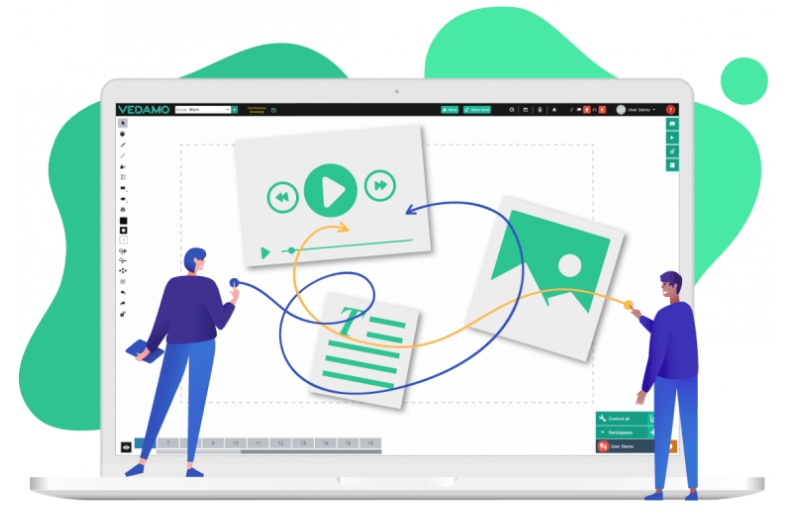
In simple terms, gamification is applying game elements to a non-game context, such as a self-paced online course.
Why online whiteboard gamification?
When introduced to a course, studies show that learners benefit from increased enjoyment (67%), extra motivation (nearly half), and enhanced learning (more than 60%). There are many advantages to using online whiteboard gamification with a self-paced course. These include: interactivity and higher interest levels, immediate feedback, increased creativity, and improved student knowledge retention.
In this article we will share tips on how to use the online whiteboard and web-conferencing platform for gamification and collaboration.
Six techniques to gamify the online whiteboard
Gamified live training can deliver richer experiences and better learning outcomes. Bring the heat to a self-paced course with the following techniques:
- Leaderboards allow learners to know where they stand relative to their classmates. Leaderboards are a powerful motivator because they give context to a student’s progress. As a result of being able to see the top of the leaderboard, students are motivated to set their own performance goals. You can place the chart on VEDAMO’s online whiteboard where it will be visible by all of your students and will serve as an incentive to keep trying.
- Points: Points can be used to allow your students to move up the leaderboard. Experience points (XPs) are awarded to pupils for the tasks they complete. Measurable awards motivate your students to do certain activities and help to quantify achievements. Unlike grades, XPs are not a one-off, but they accumulate and show progress over time.
- Badges: Research shows that awarding badges makes learners more active. Badges are a tangible form of achieving a goal, they stimulate helpful learning behaviors, and create positive emotions. Placing badges on the virtual whiteboard makes them visible to others. Thus, social comparisons also come into play.
- Quizzes: A quiz show in the virtual classroom is the emotional trigger that fights boredom and fatigue. You can cover the learning material or come up with questions for the participants’ personalities to spice up a study session.
- Team work: Interestingly, scholars at the University of Washington revealed that collaboration, not competition, engages students the most (61% vs. 43%). A good way to avoid direct competition is to divide the class into two teams and quiz them.
- Ludic elements: Online boards are distinguished by the ease of adding images, sounds, and text. So why not have some fun in class? Teachers can use VEDAMO’s online whiteboard to add ludic elements such as morphing trophies, working against the clock, puzzles, and word completions. Professor Levy at the University of Sheffield reported that the dynamic and varied use of resources increases enjoyment for both students and instructors.
One size won’t fit all
A combination of activities may be the best solution for your students since there are different player types. For example, points and leaderboards will appeal to achievers or those who are “in for the kill.” On the other hand, socializers may not be impressed by extrinsic rewards and might prefer teamwork. Combining a platform like VEDAMO’s online whiteboard with a comprehensive Learning Management System like Canvas gives you the flexibility you need to unleash gamification for all of your needs.
Related Content
 columbus_city_schools_1.png
columbus_city_schools_1.pngBlog Articles
![We can see their usage, but we want to know [which education tools] teachers feel are helpful in their environment.](/sites/default/files/styles/medium/public/image/2023-06/User%20Group%20Recap.png?itok=_3svfNBb) User Group Recap.png
User Group Recap.pngBlog Articles
 fathumb.png
fathumb.pngBlog Articles